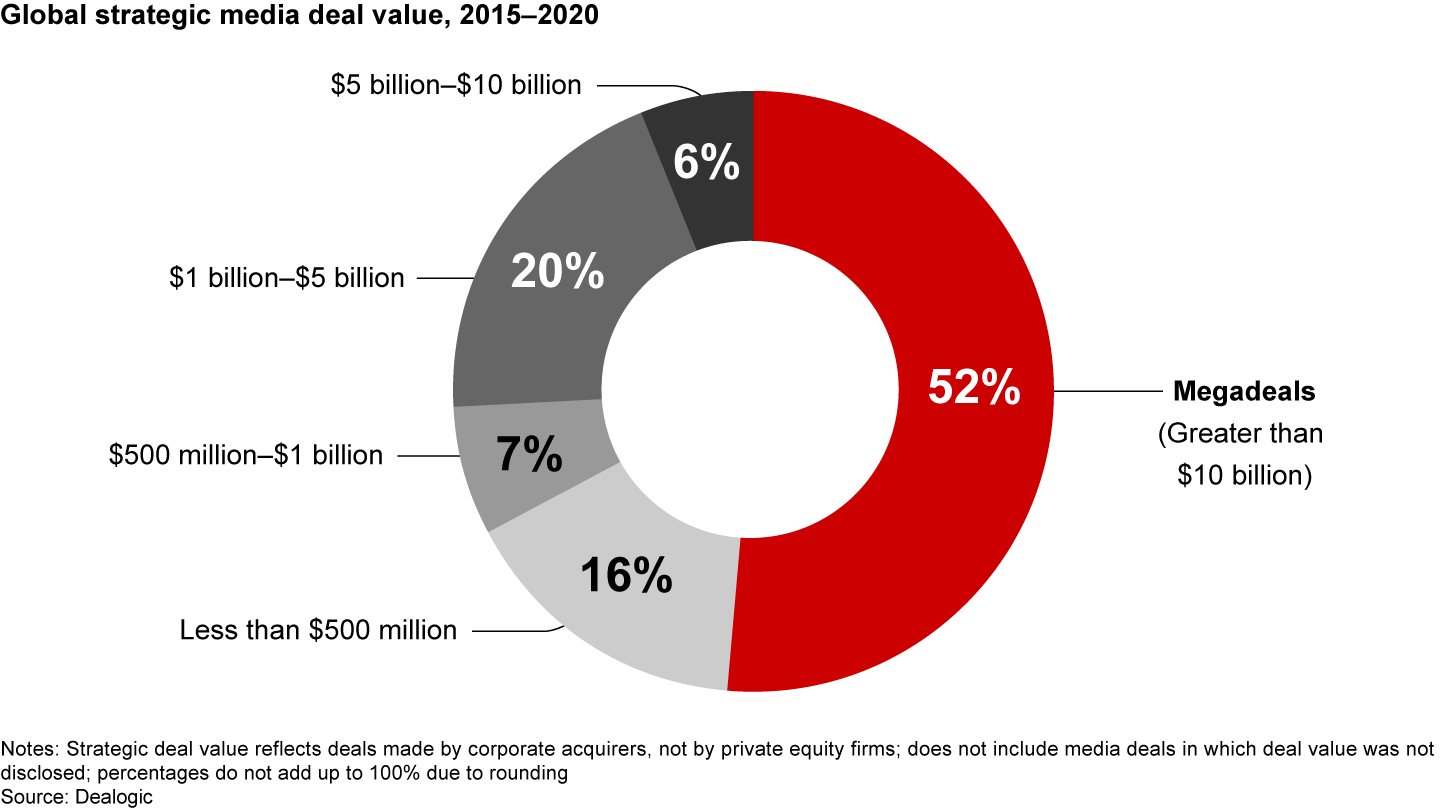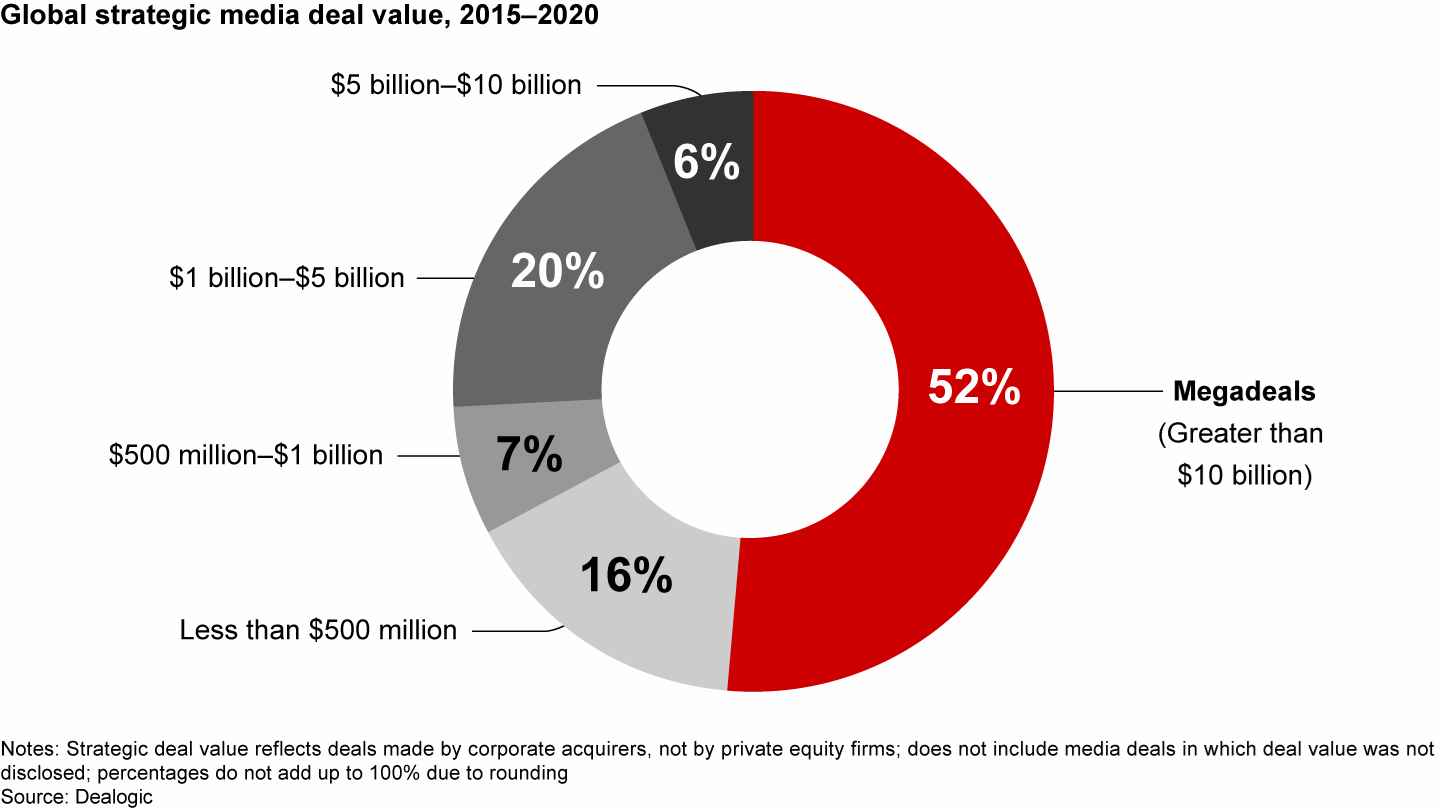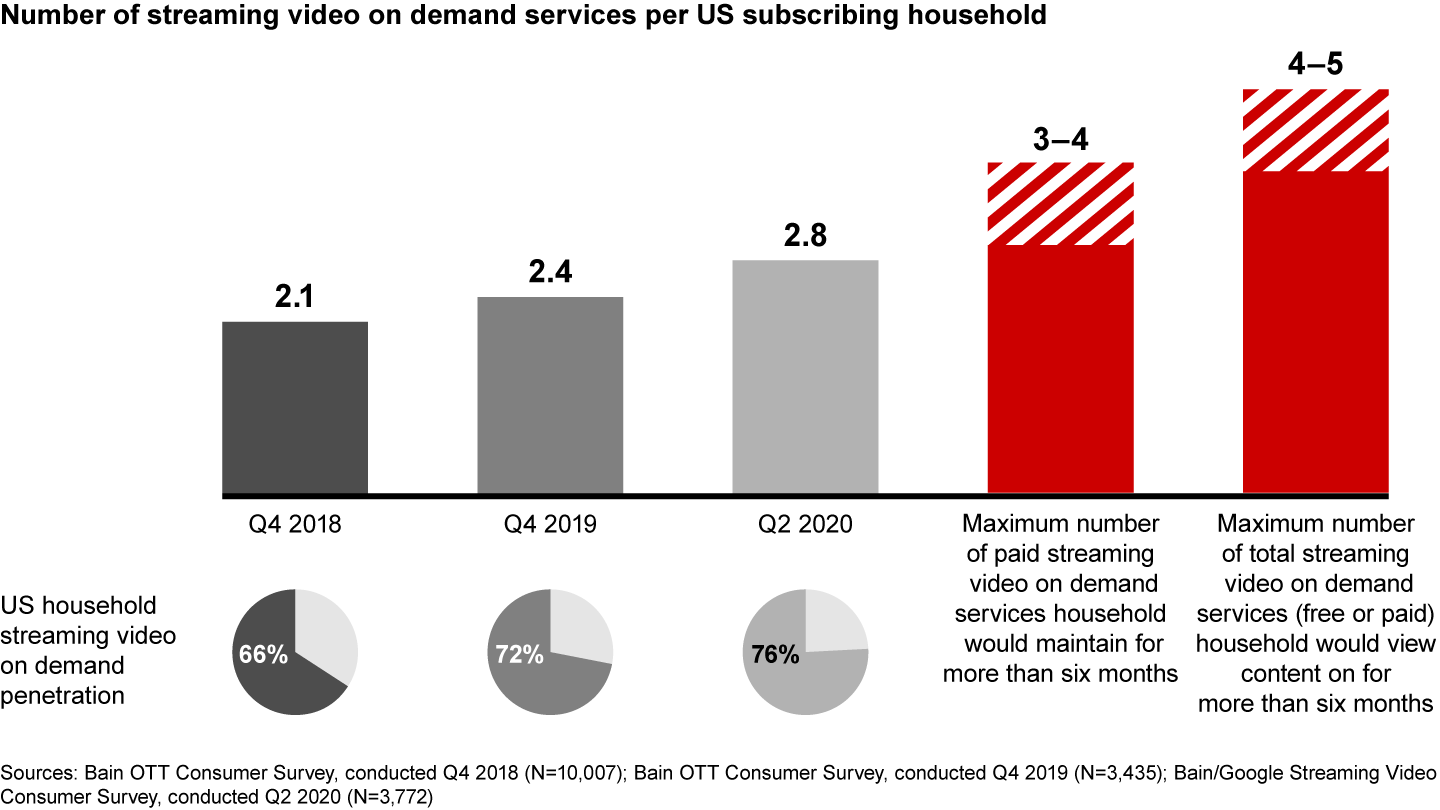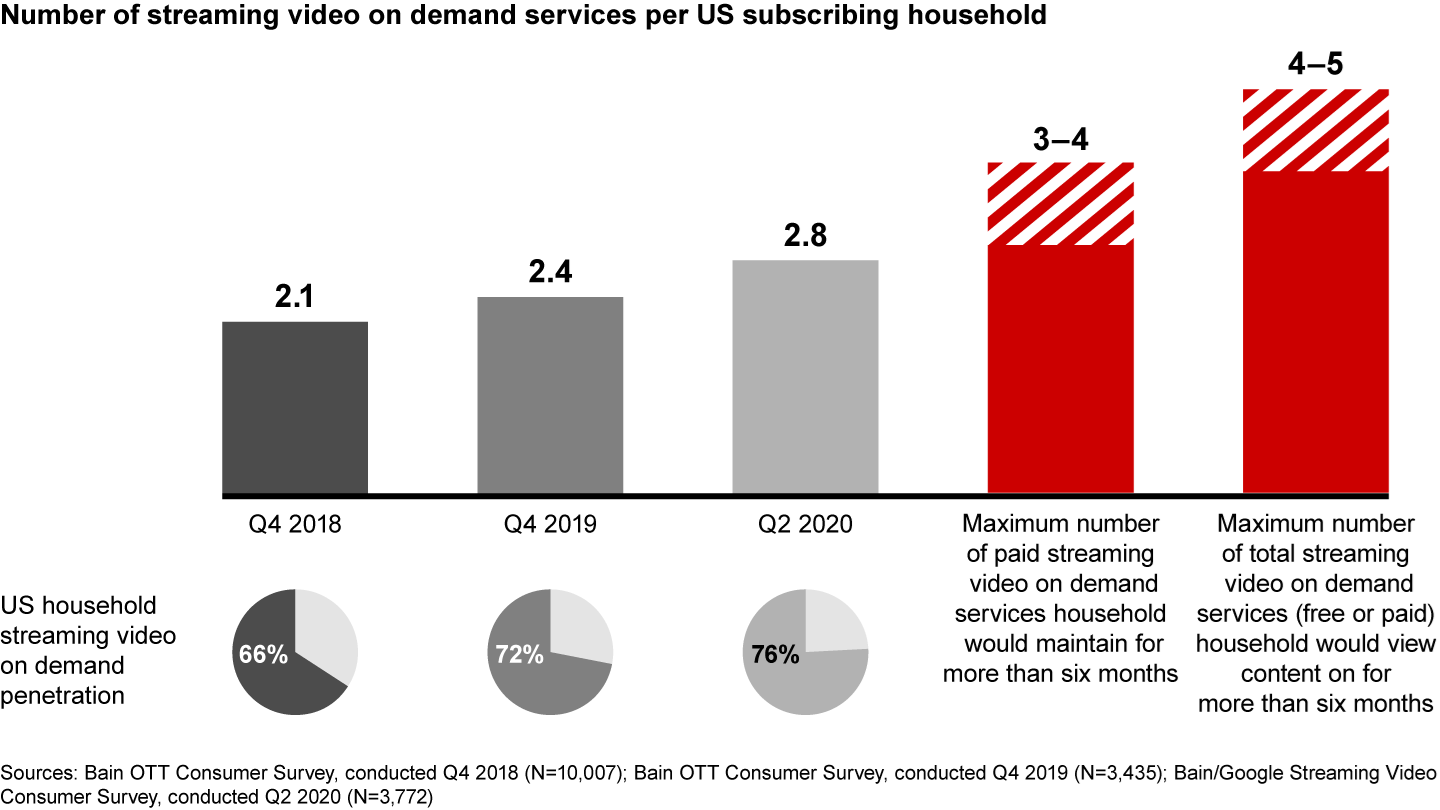M&A Report

Auf einen Blick
- The majority of growth in media will come from video streaming, which increasingly is becoming a global game. Our research suggests that consumers will settle on three or four paid streaming services, and newer entrants will have higher churn.
- While building scale with M&A, companies must use any deal as a catalyst to hasten their shift from a traditional media company to one centered on streaming.
- Accelerating global scale means buying assets or capabilities such as content engines, existing streaming services, streaming platforms, and video adjacencies.
- In any deal, it is critical to use the integration process to reshape the company’s cost structure, maximize its ability to further invest, and increase its metabolism for change.
The coming flurry of media deals for streaming
Over the past five years, media M&A activity has centered on a few megadeals, including three of the largest deals in video: AT&T and Time Warner, The Walt Disney Company and Fox, and Viacom and CBS. Megadeals valued at greater than $10 billion have accounted for more than 50% of media M&A during these years. There has been a lull in dealmaking recently as acquirers have paused to digest their recent acquisitions, but we expect a flurry of new deals over the next two to three years as global leaders march on and regional players across the world react (see Figure 1).
Megadeals valued at greater than $10 billion have accounted for the majority of media deals over the past five years


Media is becoming increasingly global. The rise of streaming has untethered the media business from geographic footprints. In addition, Covid-19 has significantly shortened the runway for traditional forms of media, including TV, by accelerating expected declines. The majority of growth in the media sector will come from video streaming offerings.
Our research suggests that there will be only a few scale winners once the dust settles. Consumers expect to land on three or four paid video streaming subscriptions, and newer services will have higher churn rates. Companies will compete for the title of top streaming service so that they can be included in the core bundle of offerings and secure prime placement on user interfaces. Becoming a top streaming service means not only having a large existing library but also a sustainable content engine that continues to feed the service. In this land grab phase of streaming, M&A is a clear way to accelerate scale, which is why we believe this will spur a new wave of activity over the next two to three years (see Figure 2).
Streaming video grew faster in the first half of 2020, but demand capped at three or four services per household


While using M&A to increase scale can help extend the runway of the traditional business for both aggregators and content creators, companies must use any deal as a catalyst to accelerate their shift from a networks-led company to one that is centered on streaming. In addition, the streaming ambition should be global, so assets or capabilities that a target can bring to hasten that global ambition are particularly valuable. In many cases, these would be more scope deals that broaden content, audiences, and capabilities. Examples of assets or capabilities that can accelerate global scale include the following:
- content engines, including both libraries and pure studios (for example, MGM, Lionsgate);
- existing streaming services and their customer bases (both subscription and ad supported);
- enabling technologies (for example, advanced advertising, predictive analytics); and
- video adjacencies (for example, video games, e-commerce).
How to get the most out of the deal
Media deals are unique in that creative storytelling is still at the heart of any media business. There should be a focused effort to ensure that key creative talent feels supported throughout the integration and transformation by minimizing the impact of the day-to-day integration on that part of the business. This should also be an opportunity for creative executives to extend their ideas across the newly integrated company with operating models that enable content creation to flow across an enterprise, including making the best of an expanding international footprint. Media companies should also use the moment to look for ways to increase the diversity of their creative voices by elevating talent within the company and by forming new creative partnerships across markets.
Another way to get the most out of the deal is to use the integration to increase the metabolism of change for the entire organization. Media will be in a state of turbulence over the next three to five years, and the organizations that emerge as winners will be able to operate effectively within a constant state of change. Media CEOs should frame the integration as the beginning of a transformational journey, and they should set up the appropriate infrastructure to do that. Some of the most successful integrations started with a robust integration management office that then transitioned into an ongoing transformation office, using the infrastructure to continue pushing transformational initiatives.
Lastly, many of the largest media integrations over the past three years have surpassed the cost synergies originally reported. It is critical to use the integration process as a stimulus for reshaping a company’s cost structure to maximize its ability to invest in streaming and other key capabilities such as data and analytics. Standard benchmarks are not aggressive enough for a true transformation of a given organization or function as they only focus on areas of overlap. Focusing solely on those overlap areas and Day 1 continuity would be a missed opportunity to prepare for the future, especially when companies can use the cover of an integration as a catalyst.